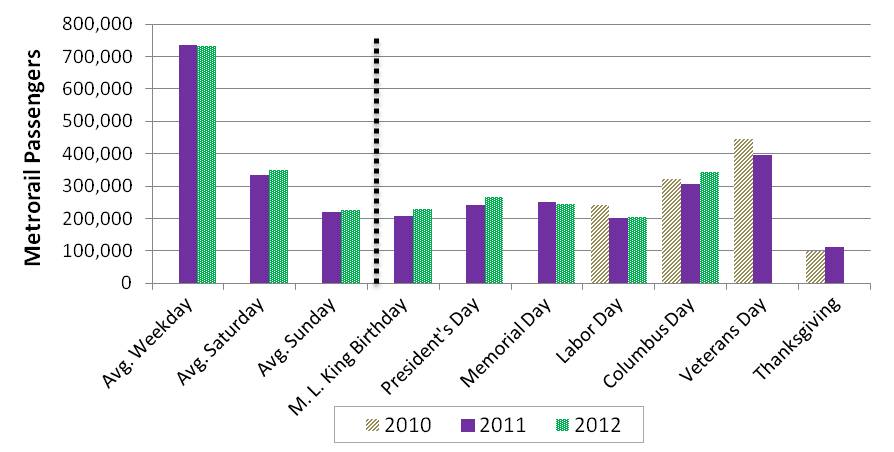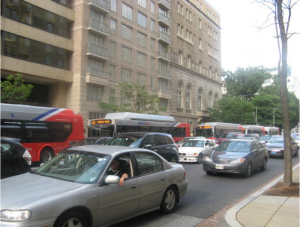Data Download: Metrorail Ridership by Origin and Destination
Every day, Metro gathers a vast amount of information on how customers use the system – where and when they pass through turnstiles and board buses, how they pay, and more. There’s much to be learned from this data, and many in the past have done so. We’ve heard through MindMixer, Metro’s new online community engagement site, that more detailed ridership statistics would be useful. So in the spirit of open data and collaboration, here’s a data download of rail station-to-station passenger counts, by time period, by day of the week, for May 2012.
May 2012 Metrorail OD Table by Time of Day and Day of Week (.xls, 6.8 MB)
This data can answer many questions, such as: Where do passengers entering at one station go? Where do late-night riders enter the system? How does Saturday ridership differ from Sunday? Which stations are most commuter-oriented, and which are most lively at midday and evening hours?
What does this data tell you? Do you see any patterns? Feel free to post a link in the comments!
What other data that would help answer additional questions?
Technical notes about this data:
- The data show average ridership, averaged across all days in May 2012, excluding Memorial Day. (We typically use May as an “average” month, since it falls in the middle of seasonal swings, is relatively unaffected by extreme weather, etc.)
- Time period shows the time the passenger entered (not the time they exited).
- AM Peak = opening to 9:30am
- Midday = 9:30am to 3:00pm
- PM Peak = 3:00pm to 7:00pm
- Evening = 7:00pm to midnight
- Late-Night Peak = Friday and Saturday nights only, midnight to closing





Recent Comments